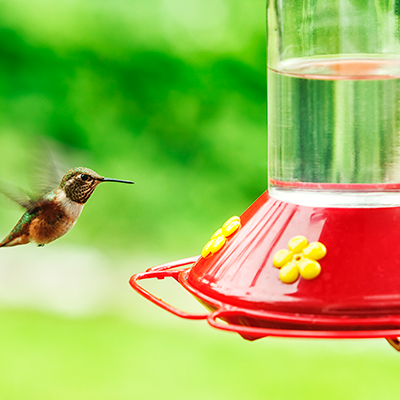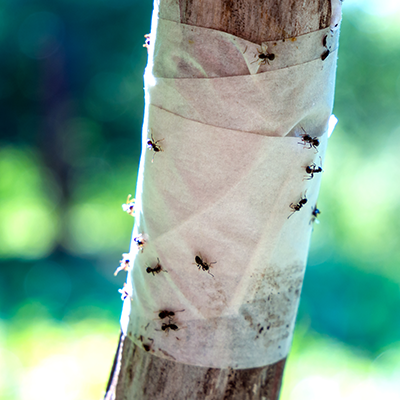This past year I decided that I would try and attract brightly colored orioles and hummingbirds to my birdfeeders. So I bought and placed a hummingbird feeder and special orange and jelly holder in my backyard. A vibrant-looking male oriole and a bit duller-looking female oriole began coming to my feeder, frequently devouring the grape jelly and oranges I put out for them. Tiny, brightly colored hummingbirds started showing up, enjoying the sweet nectar I put out. I was delighted watching these, and other bird species enjoy the nice treat on my Brevard County property.
And then, two weeks in, ants started to take over. Big ants, small ants, ants brown and black were destroying my bird’s meal! Soon I was seeking out a way to put an end to this madness. Knowing there are tons of other bird lovers in Brevard County, I decided to share my ideas and tips for keeping those dreadful ants from ruining your bird’s feast.
Tips & Tricks For Keeping Those Annoying Ants Out!
Place the Feeder Over Water
The first thing I discovered is that ants are terrible swimmers. Therefore, just placing your feeder over a body of water, such as a pond or fountain, may deter these annoying critters. If there is a patio or deck nearby, you can secure it to the foundation using a clamp pole design.
Use an Ant Moat
Don’t live on or near water? Make your own water with an ant moat. An ant moat is a cup filled with water wrapped around a hanger. You will need to refill the ant moat every other day to keep it from drying out in the Florida sun, but it will help to keep those nasty ants away. Some birdfeeders come with ant moats built-in. If you have a feeder that doesn’t have an ant moat, you can make your own or buy one that easily attaches to your feeder.
Use an Ant Guard
We include this idea directly under our tip for utilizing an aunt moat because sometimes these daredevils can get around them. These crafty yet sneaky insects use their superior communication skills and build bridges using each other’s bodies to get across the water. This is where an ant guard comes in. Like the ant moat, an ant guard is installed above your feeder. Ant guards contain a light insecticide called Permethrin. Permethrin does not kill ants but deters them and is safe around birds, people, and pets.
Hang the Feeder on Fishing Line
The use of a fishing line works because it is too thin for ants to climb, thus hindering them from reaching your feeder. Most fishing lines are also slippery in texture, making it even harder. If using this method, be sure the fishing line is strong enough to hold your feeder securely.
Periodically Move Around Your Feeder(s)
Keep ants on their toes by moving around your feeder to different parts of your yard. Why is this helpful? Because once ants find the location of your birdfeeder, they send out pheromones, signals used to communicate to other ants that there is a tasty feast nearby. Therefore, if you move the feeder around your Brevard County property every two to three days, they will have a much harder time finding the location. If you have more than one feeder, try to space them apart by at least seven feet.
Use Adhesive Tape
One messy but effective way to keep ants from snacking from your feeder is by applying adhesive tape around the wire or pole your feeder is hanging on. Make sure the tape is applied with its gum side on the outer part. Ants will become stuck and unable to reach the feeder parts or get to your feeder at all. The downfall to using this method is having to replace the adhesive tape throughout the week. And the adhesive tape and its scent usually wear off after a few sunny days.
Make it Slippery
Another sort of messy but effective way to deter ants is by using Vaseline or another type of oily liquid on the outer side of your feeder or onto the pole, string, or fishing line your feeder is hanging from. Ants are not fans of sticky surfaces and will most likely fall when they begin to walk across them. The downside to using this method is that if a hummingbird or oriole accidentally touches the gasoline or oily substance, its wings might get sticky, and have trouble flying. So be careful what areas you grease, and if you see birds struggling at any time, immediately stop using this method.
Stop Pests in Their Tracks With Flowers Turf and Pest Management’s Indoor and Outdoor Pest Control
While we may not be able to control the ants getting to your hummingbird and oriole feeders, we can put a stop to the number of pests that enter your Brevard County home. Flowers Turf and Pest Management offer both indoor and outdoor pest control. We have a separate division dedicated to treating and controlling pests and rodents. Our indoor and outdoor pest control will safeguard your yard from various lawn insects, while our indoor pest control will protect your sacred space from pesky critters such as ants, roaches, spiders, and earwigs. We also offer flea and tick control to protect you and your beloved pets.
Contact us today or visit our website to learn more. You can give us a call at 321-254-1929 or fill out our online contact us form and receive a reply by email. We service the entire central and south Brevard areas and offer quality lawn care and tree and shrub care services.
For more informative articles like the one above, visit our monthly blogs. And feel free to learn more about us by checking out our Facebook page.
